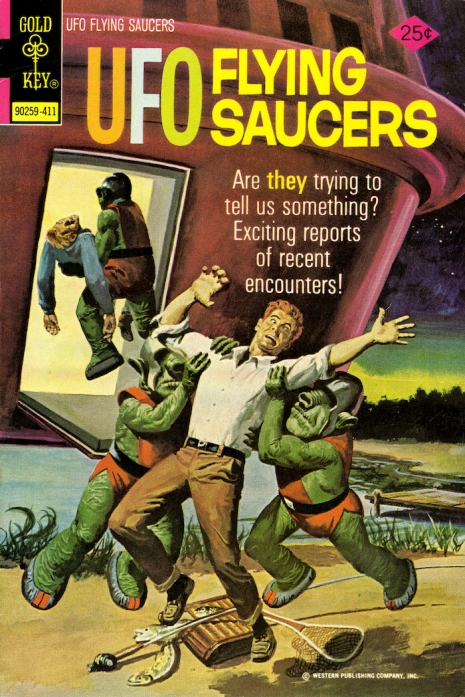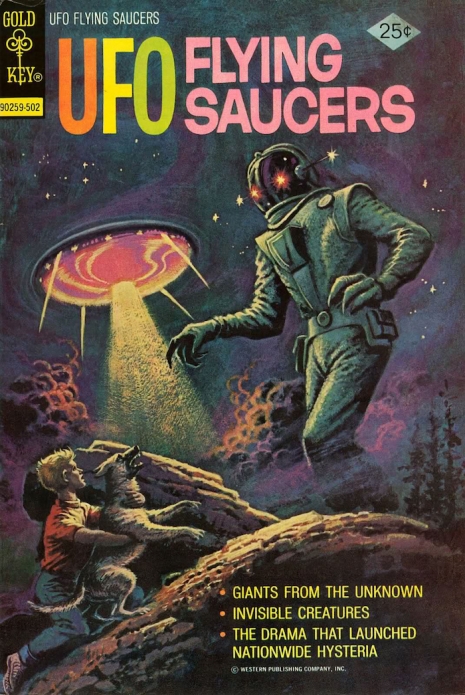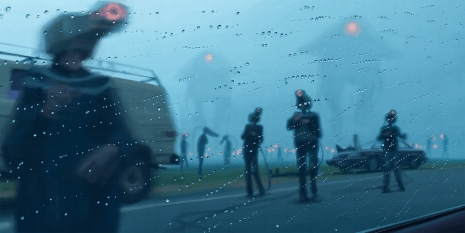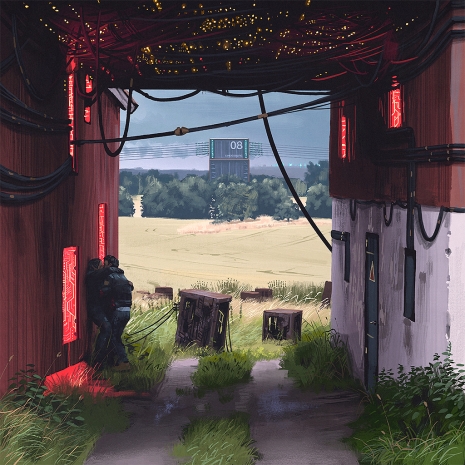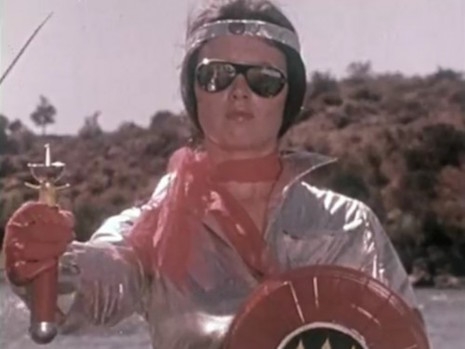
This is a guest post by Nicholas Abrahams.
If you have a spare fifteen whole minutes, you could do worse than check out the new short film John Was Trying to Contact Aliens on Netflix about John Shepherd, a guy who has spent 30 years beaming out obscure music to aliens, constructing a homemade SETI project based at—and taking over—his grandparents home in rural Michigan. We shot the breeze with director Matt Killip.
Dangerous Minds: Firstly, how did you come across John Shepherd, the subject of your new short film on Netflix?
Matt Killip: I first saw a picture of John in the book Messengers of Deception by the UFO researcher Jacques Vallée. The same photo is in my film: John is seated in front of a large bank of UFO tracking machines in a living room, with his grandma next to him doing her knitting. I immediately wanted to know more about this image—what was going on here?
Luckily I was able to track John down and make contact. When I heard about the circumstances of his personal life I started to realize his story could make a beautiful film. A while later I found some footage of John broadcasting the band Harmonia into outer space. It turned out that John was broadcasting loads of music that I love into the cosmos: Kraftwerk, Tangerine Dream, Terry Riley, Gamelan music from Indonesia, free jazz, loads of reggae and dub ... It was an amazing playlist—in effect a cosmic radio station broadcasting music for aliens.
DM: He’s quite amazing, playing music into deep space for aliens to come across and make contact. But most people would maybe have a dream of doing this, whereas John takes over his grandparents house to actually do this!
Matt Killip: Ha! Well, John is completely self-taught, he built many of the machines you see in the film himself. He has an incredible technical mind, a deep love of physics and, in particular, electricity. He spent a lot of time hunting in scrap yards and military auctions with his grandfather, who was a machinist and also helped him build some of the equipment. The radar John built was sitting on a tower made out of a scrapped ski lift! But I don’t really explore the science behind what John was doing in my film. I was afraid of getting slowed down in technical details when I was most interested in the fundamentally romantic idea of contact: this search John had for something beyond him.

DM: Yes , he seems to be on a romantic quest of some kind, to ‘make contact.’
Matt Killip: I know a lot of people might view John’s project as quite eccentric but I would encourage everybody to think about it another way: we are on a planet, that’s part of a galaxy, one of billions with an infinite number of other suns and planets. We don’t know what else is out there ... Why wouldn’t you try to make contact? John was using music as a sign—or even a gift—to other consciousnesses.
DM: You pack a heck of a lot into fifteen minutes.. It has the three act structure of a feature film… in fact it is better than many feature films I’ve seen…
Matt Killip: Thanks!
DM: What are the challenges of keeping a film short? Were you tempted to make it as a feature doc?
Matt Killip: I just wanted to stick to the core of the storytelling. Originally there was a whole section about UFO culture, but I cut it out to make the story flow better. Also, I’ve only made short format films, so maybe I’m a little scared of making a longer one…
DM: Your earlier films are pretty bonkers. There’s one about teenage backyard wrestler and horror filmmaker Ronny Long, and another about a guy who arranges microscopic creatures onto slides in psychedelic patterns. What’s the connection?
Matt Killip: I’m think I’m drawn to people who have found ways to escape everyday reality into other worlds. I’m really sympathetic to that impulse.. I share it to a certain extent, but I’m lacking the obsessive drive needed to see it through. It’s a very singular vision that allows Ronny the teenager to keep creating for his own pleasure, or John to broadcast music for 30 years, never knowing for sure if anyone could hear it.
DM: Tell me more about Ronny. (Full disclosure - I met Ronny Long when he visited the UK to hold an exhibition at the Horse Hospital in London. Ronny is as great as you would imagine from watching Master of Reality.)
Matt Killip: I’ve always loved wrestling for the characters and story lines, it’s like a kind of folk theatre. In the early 2000s my interest led me to Ronny Long’s website “Texas Boneyard Wrestling.” Ronny had started a horror-based wrestling federation in his backyard in the suburbs of Dallas. It was a really elaborate affair and so much thought and effort went into it. He was fifteen at the time. After speaking with him I realised that wrestling was only part of Ronny’s story—he was obsessed with Bigfoot and cryptozoology, was continuously drawing and painting and had been making abortive attempts at horror movies for several years. He was burning up with this stuff. His output was enormous and it seemed like he was compelled to create these things. He was not getting support or encouragement from anywhere—certainly not from school—but he was just off, creating these worlds. I really love that about him.
DM: Are you still in touch with Ronny?
Matt Killip: Still in touch… These days Ronny is still drawing and painting. He also records a wild talk show in his basement.
DM: I really love his paintings of Bigfoot.
Matt Killip: As a nine-year-old kid he really believed in Bigfoot. They are him. He has something of an outsider quality to him. And yes, his paintings are amazing.

DM: And The Diatomist?
Matt Killip: I love nature and have made several shorts that could be considered in some way nature films. In the case of The Diatomist, I came across an extraordinary image of an antique diatom arrangement. I couldn’t quite believe that these beautiful microscopic sculptures were actually tiny sea creatures, completely invisible to the naked eye.
In general I get tripped out by the extraordinary variety to be found in the natural world. Looking through books on moths, beetles, mushrooms or lichen, the multiple different forms, related but always changing, are completely amazing to me. It’s as close to a religious experience as I can get. Diatom arrangements completely embody that sublime feeling. After more research I discovered that there was one man, Klaus Kemp, keeping this Victorian art form alive, so I immediately got in touch with him. Klaus is undoubtedly obsessive, but it’s a beautiful obsession. He is practicing an artform that embodies Darwin’s phrase: endless forms most beautiful and most wonderful have been, and are being, evolved.
DM: The films all seem to end in a cosmic way, with the humans somehow part of a great cosmos.
Matt Killip: I guess we are all trying to find our place in the cosmos. It’s just….. there’s a good quote by Carl Sagan… here it is … “The nature of life on Earth and the search for life elsewhere are two sides of the same question - the search for who we are.”
This is a guest post by Nicholas Abrahams.








